From Corporate Consultant to Regenerative Pioneer
How Elizabeth Transformed 465 Acres in Upstate New York
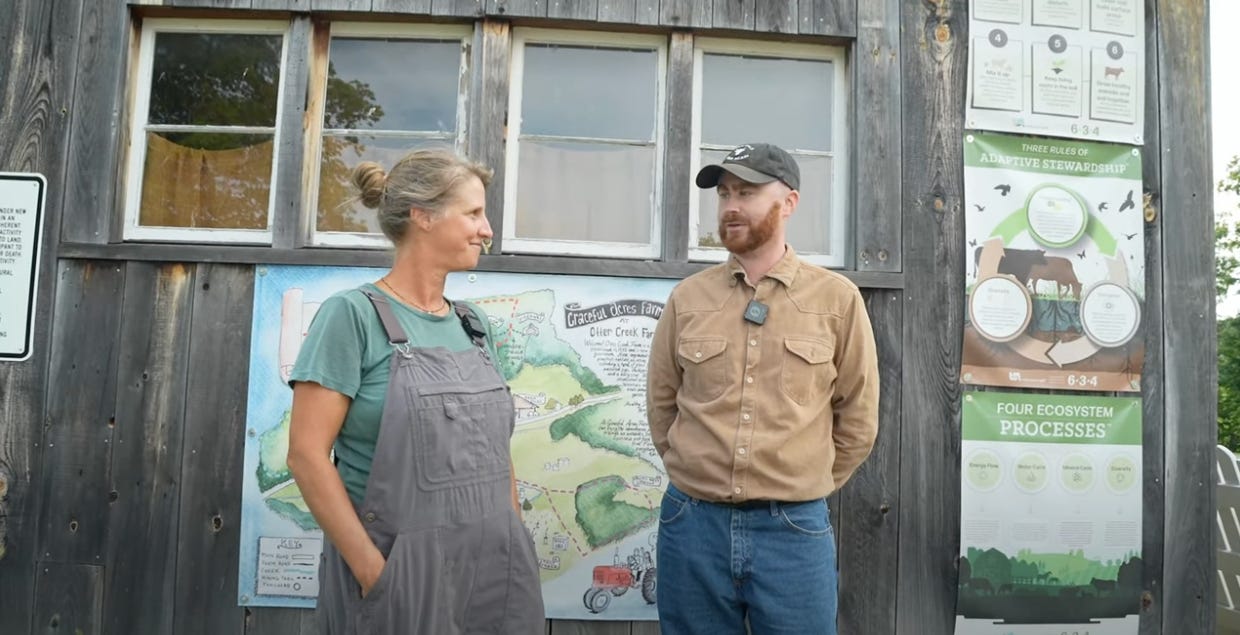
Meet Elizabeth from Otter Creek Farm – a first-generation regenerative farmer who's proving that you don't need to inherit farmland to create something extraordinary. What started as a corporate consultant's quest for real food has evolved into a 465-acre regenerative agriculture showcase that's rewriting the rules on everything from pig rotations to farm stays.
Elizabeth's journey from Kentucky business consultant to New York regenerative farmer isn't just inspiring – it's a masterclass in how soil health principles can transform both land and lives. And trust us, by the end of this story, you'll understand why her innovative systems are catching the attention of farmers nationwide.
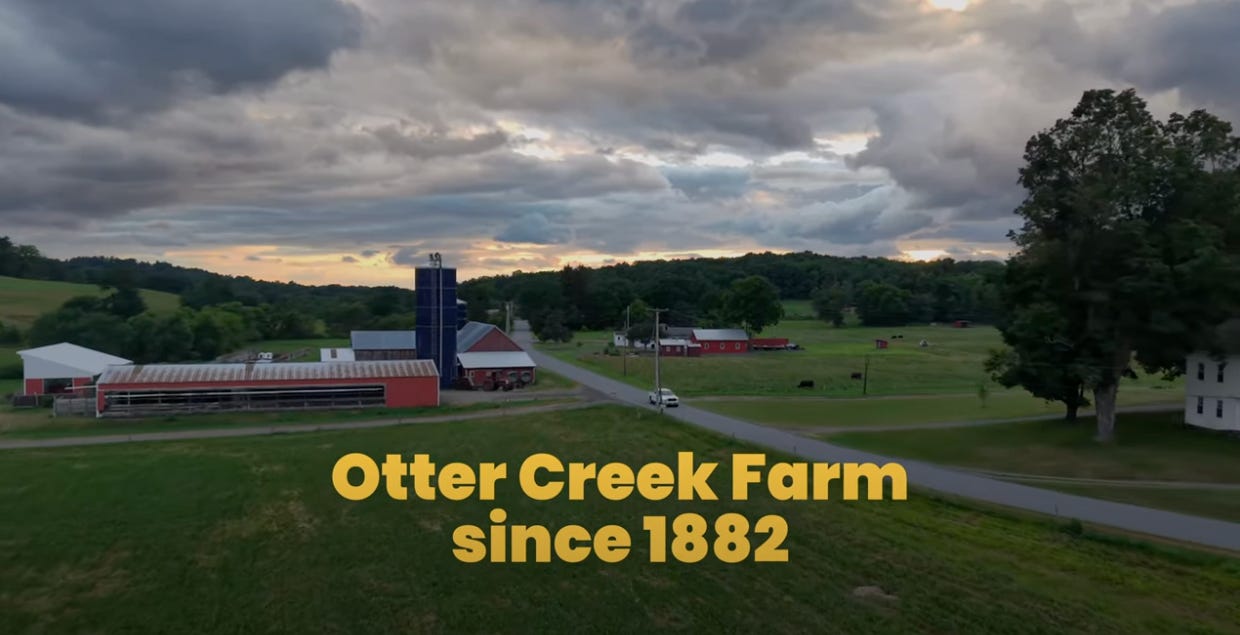
The Farm: Otter Creek's Regenerative Transformation
Nestled in upstate New York, Otter Creek Farm spans 465 total acres with 250 acres of open pasture. This former dairy operation has been completely reimagined through regenerative agriculture principles, focusing on soil health, animal welfare, and nutrient-dense food production.
Elizabeth runs a diversified operation that includes:
Cow-calf herd on rotational grazing
Heritage breed pigs in an innovative 8-paddock rotation system
Pasture-raised chickens using mobile chicken tractors
Seasonal turkeys raised on fresh pasture
Farm stay business connecting consumers to regenerative agriculture
But here's what makes Elizabeth's approach different: she's not trying to scale up. Instead, she's perfected a system that prioritizes animal welfare and nutrient density over maximum production.
The Awakening: From Bamboozled Consumer to Food Freedom Rebel
Elizabeth's transformation didn't happen overnight. Like many of us, she was a bamboozled consumer who thought brown eggs were inherently better than white ones – until a life-changing moment at a Cargill plant opened her eyes.
"I was working as a business consultant for a horse feed company, and they flew me to a Cargill plant in Minnesota," Elizabeth recalls. "This guy showed us paint palettes and explained how he could make egg shells any color and charge 25 cents more for brown eggs. I raised my hand and asked, 'At what point did we stop talking about the nutrition of the egg?'"
That WTF moment changed everything. Elizabeth quit her job, left her old life behind, and embarked on a journey to understand where real food comes from. It's a reminder that sometimes our biggest career pivots start with asking the right questions about our food system.
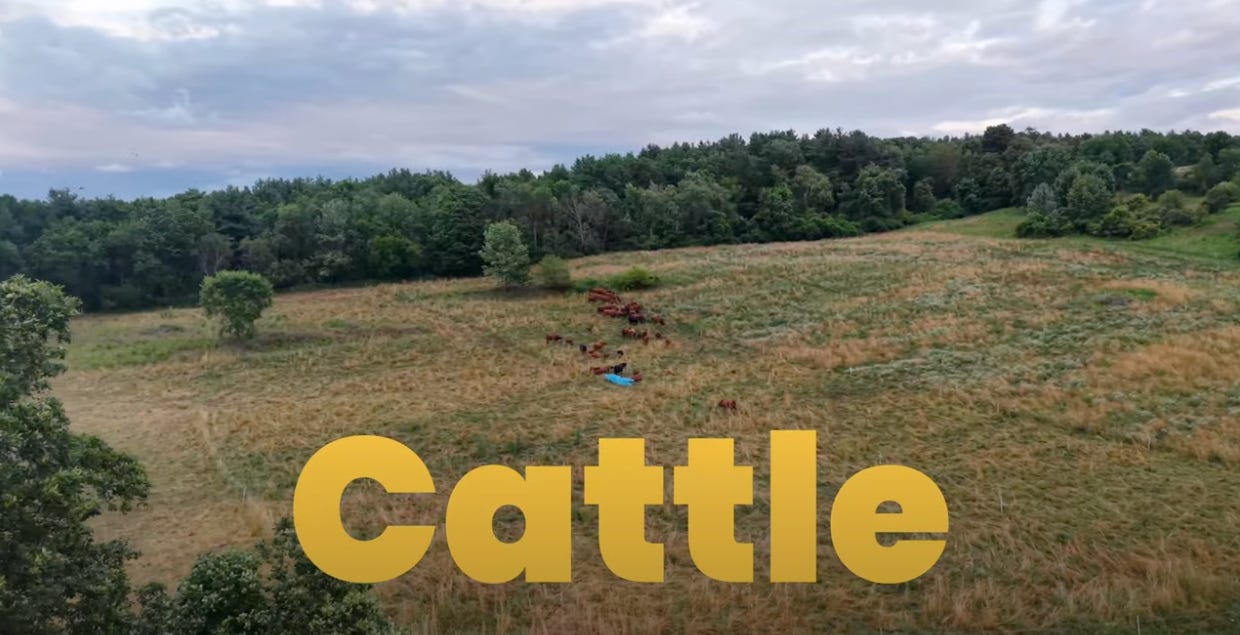
Regenerative Grazing: The Foundation of Success
At the heart of Otter Creek Farm lies Elizabeth's commitment to soil health principles and adaptive stewardship. She doesn't follow prescriptive farming methods – instead, she adapts regenerative principles to her specific context, climate, and goals.
The Soil Health Framework
Elizabeth guides her farm management using six soil health principles and three adaptive stewardship principles:
Know Your Context – Understanding personal values, farm conditions, and animal needs
Minimize Soil Disturbance – Avoiding tillage and chemical inputs
Maximize Soil Cover – Keeping living roots in soil year-round
Maximize Biodiversity – Integrating multiple species and enterprises
Integrate Livestock – Using animals as tools for land regeneration
Keep Soil Covered – Protecting soil surface from erosion
"Learning regenerative agriculture in the form of principles has been the most helpful because it's adaptable," Elizabeth explains. "It's not a prescription. No one's telling me my pastures need to be this size always. It allows us as farmers to make real-time management decisions."
Rotational Grazing Success Metrics
Elizabeth's rotational grazing system delivers impressive results:
60-day recovery period for pasture plants
Improved soil health through controlled impact and rest
Increased forage quality from diverse plant species
Reduced feed costs as animals harvest their own nutrition
Enhanced water cycle through better soil structure
The key insight? Elizabeth doesn't move animals based on a calendar – she moves them based on what the land and animals need in real time.
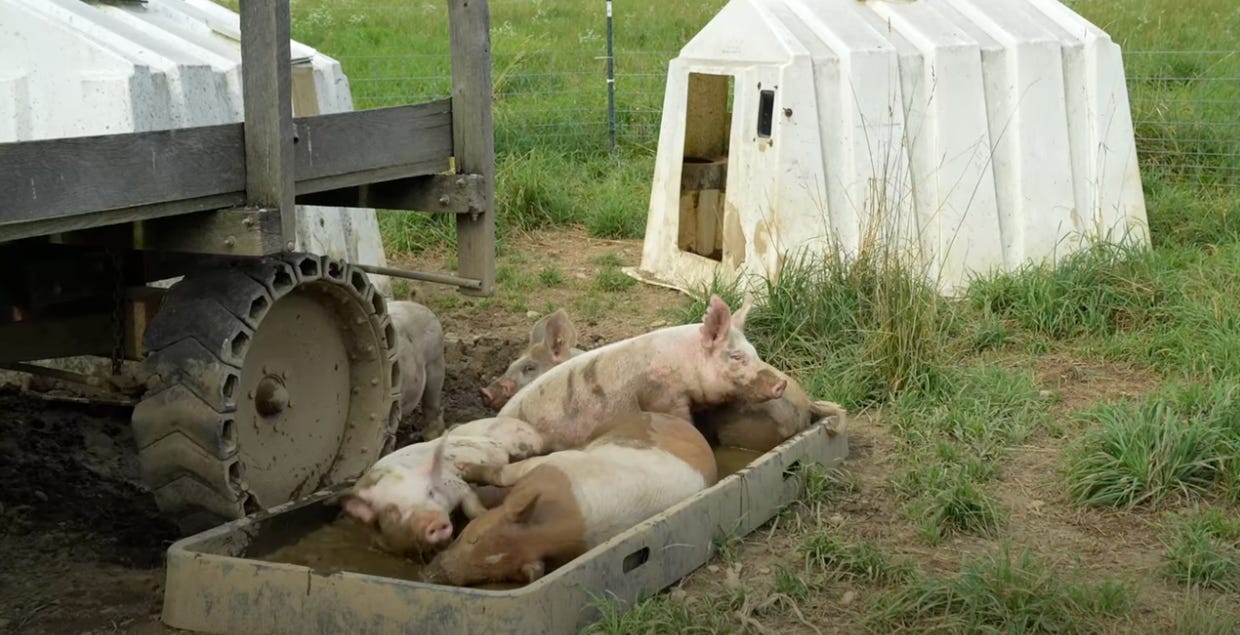
Innovation in Action: The Pig Rotation Revolution
One of the most impressive systems at Otter Creek Farm is Elizabeth's innovative pig rotation setup. Frustrated with monthly moves that gave pigs too much time to destroy pasture, she designed an 8-paddock system that moves pigs weekly.
The Pig System Breakdown
Central Hub Design:
Food, water, shelter, and shade centrally located
Pigs access different paddocks via moveable panels
100-year-old running gear provides mobile shade structure
Easy access for management without entering paddock
Weekly Rotation Benefits:
60-day recovery period for each paddock
Fresh grass available every week
Minimal land impact – only 1 acre disturbed annually for 6 pigs
Continuous nutrition from diverse pasture plants
Natural behavior expression while controlling impact
"Anyone who says pigs don't eat grass should come watch me move these pigs," Elizabeth says. "On Tuesday when the grass is fresh, they'll choose grass over grain all day long."
The visual proof is undeniable – walking through Elizabeth's pig rotation, you can see the progression of regeneration from week 1 (recently grazed) to week 7 (fully recovered with lush grass growth).
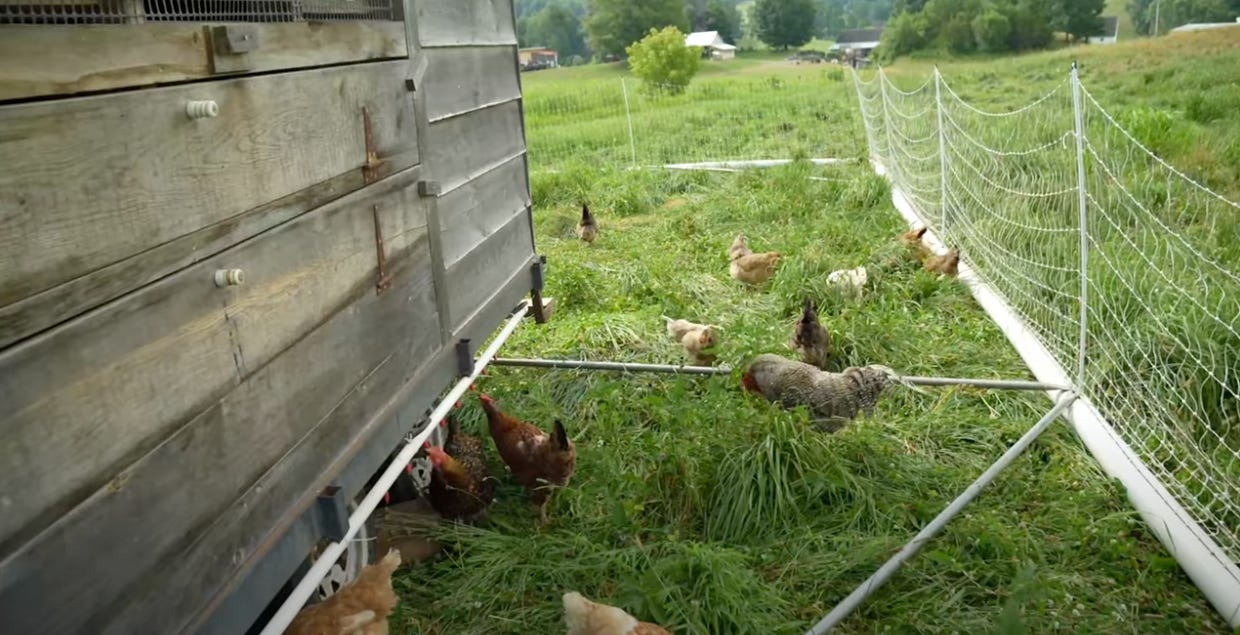
Pasture-Raised Poultry: Mobile Systems That Work
Elizabeth's chicken tractor systems demonstrate how thoughtful design can solve multiple challenges simultaneously. Her laying hens live in a mobile coop with an attached hen pen that moves everything together – coop, birds, and fencing – in one operation.
Chicken System Innovations
Water Independence:
Rainwater collection system built into coop roof
Gravity-fed watering system eliminates daily water hauling
Backup water supply for dry periods
Predator Protection:
Rooster protection against avian predators
Narrow pen design discourages large birds like eagles
Shade cloth coverage for additional protection
Efficiency Gains:
One-person operation for moving entire system
15-minute setup for new paddock
Weather protection integrated into design
"The negative side of always coming from above when feeding in a barn is that they see shadows as threats," Elizabeth explains about her decision to raise chicks outdoors from day one. "These birds scratch and peck and do all their natural instincts from day one, and they're not afraid of me."
The Business Model: Quality Over Quantity
Here's where Elizabeth's approach gets really interesting for food freedom rebels: she's deliberately staying small-scale to maintain quality and values alignment.
Annual Production Numbers
4-5 beef cattle finished per year
5 heritage breed pigs
100-150 meat birds (heritage breeds only)
35 laying hens
3 turkeys (for personal consumption)
"My business is not meat," Elizabeth emphasizes. "My business is feeding myself and the farm stay. We could raise a lot more animals, but I'm at capacity and sold out every year."
This approach allows Elizabeth to:
Prioritize animal welfare over profit margins
Focus on nutrient density rather than volume
Maintain direct relationships with all customers
Ensure sustainable workload for long-term success
Feed Strategy: Balancing Values and Reality
One of the most honest conversations in regenerative agriculture revolves around supplemental feeding. Elizabeth's approach to grain supplementation reflects the real-world challenges many small-scale farmers face.
The Feed Evolution
Starting Point: Local non-GMO grain (half the cost of organic) Current Approach: No-soy organic feed (double the previous cost) Why the Change: Omega-6 fatty acid test results
"I had my meat tested for fatty acid profiles," Elizabeth explains. "My grass-fed beef was outstanding – omega-6 to omega-3 ratio of 1.3 to 1. But my pork and chicken had high omega-6s from the grain."
The kicker? Elizabeth's own blood work showed the same pattern – high omega-6s despite eating only her own pastured meat. This is the kind of transparency and continuous improvement that sets real regenerative farmers apart from industrial operations.
Even after switching to expensive organic feed mid-season (absorbing the cost herself), Elizabeth maintains: "I'm growing my meat first. I wanted that omega-6 down, and it was worth whatever money I might lose this year."
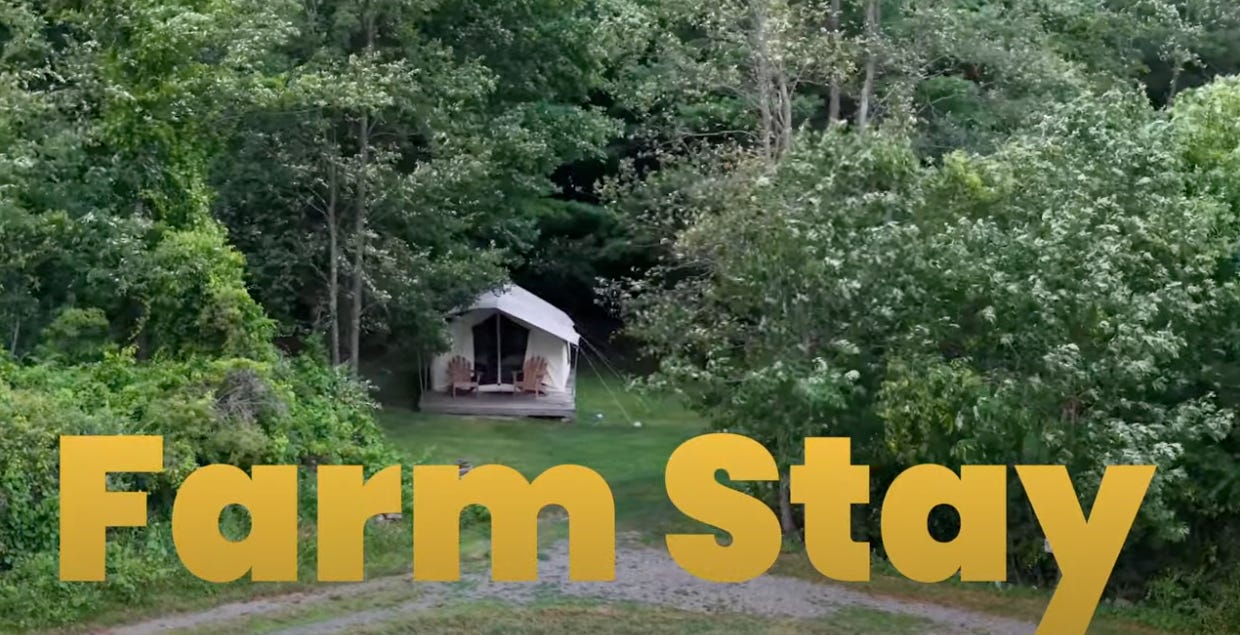
Farm Stay: Building Food Freedom One Guest at a Time
Elizabeth's farm stay business isn't just additional income – it's a strategic tool for connecting consumers with regenerative agriculture. Operating seasonal accommodations from May through October, she hosts urban guests looking to experience rural life.
The Farm Stay Philosophy
"I'm inviting you into my home," Elizabeth says about her guest experience. "You're a mile from my house, but this is the same thing as if you were in a bedroom in my house."
Guest Experience Includes:
Glamping accommodations with wood stoves for shoulder seasons
Farm tours explaining regenerative practices
Direct meat sales to interested guests
Educational experiences about food production
The impact goes beyond business metrics. Elizabeth regularly receives emotional feedback from guests who describe their stays as "life-changing." Many return home to seek out local regenerative farmers in their own communities.
"I'm done with my meat business for them," Elizabeth explains. "I'm not trying to create new customers for myself. I want them to go home and find their farmer."
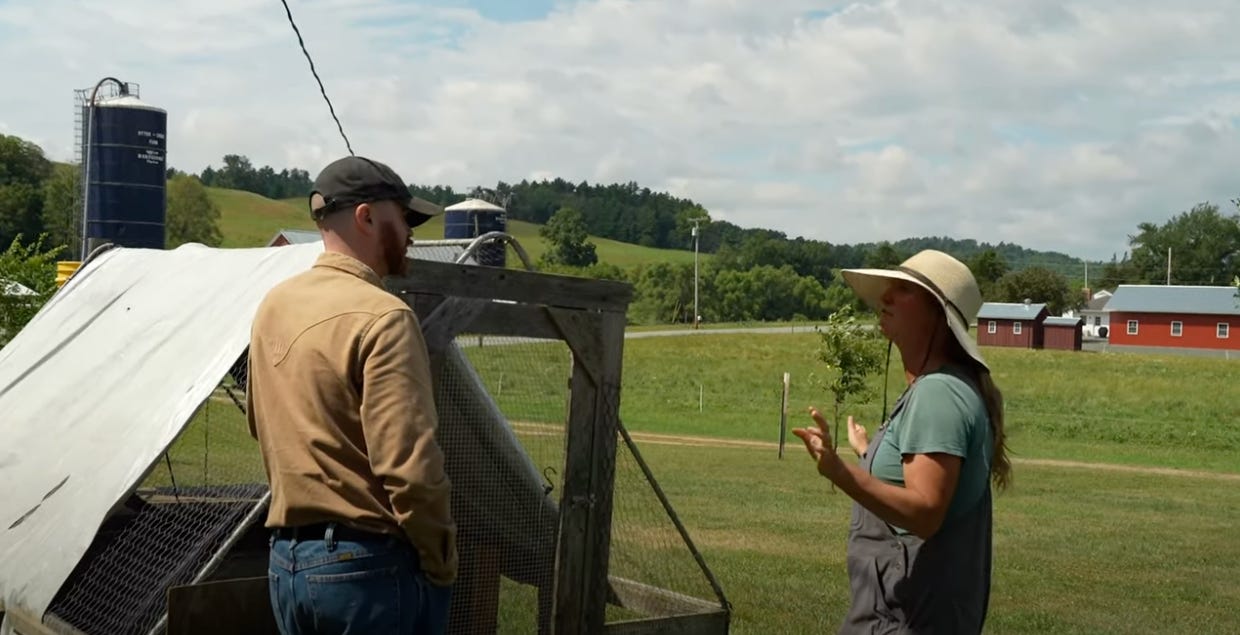
Challenges Overcome: Learning Through Real-World Experience
Elizabeth's journey hasn't been without significant challenges that offer valuable lessons for other regenerative farmers.
The Chicken Tragedy: Management Lessons
During a particularly busy farm tour day, Elizabeth and her partner both assumed the other had opened the chicken coop door for shade access. Thirty chickens died of heat stroke when temperatures soared and they couldn't access shade or water.
"Total management error," Elizabeth reflects. "You put 30 dead chickens in the bucket of a tractor and say fuck, and you say I don't want to do that again."
The response? Install shade cloth coverage to prevent future tragedies and implement clearer chore protocols. Elizabeth also demonstrates the transparency food freedom rebels appreciate – she told her customers exactly what happened through her newsletter.
Predator Pressure Solutions
Losing multiple chickens and turkeys to hawks and eagles led to systematic improvements:
Adding roosters for natural predator deterrence
Narrowing pen designs to discourage large birds
Installing overhead protection when necessary
Positioning near farm buildings for easier monitoring
The Economics of Regenerative Agriculture
Elizabeth's honest discussion of farm economics provides crucial insights for both farmers and consumers understanding true food costs.
Heritage Breed vs. Industrial Economics
Freedom Ranger Chickens (Elizabeth's choice):
12 weeks to finish
4.5 pounds processed weight
Twice the cost compared to Cornish Cross
Active grazing behavior creates nutrient density
Cornish Cross (Industrial standard):
6 weeks to finish
6 pounds processed weight
Lower feed costs but confined lifestyle
Fat accumulation around organs at 6 weeks
"When we butchered those chickens, every one of those white chickens had a layer of fat around all their organs at six weeks old," Elizabeth recalls. "I was like, I'm not eating that meat."
The lesson for food freedom rebels: cheap food costs more in the long run, both for our health and the environment.
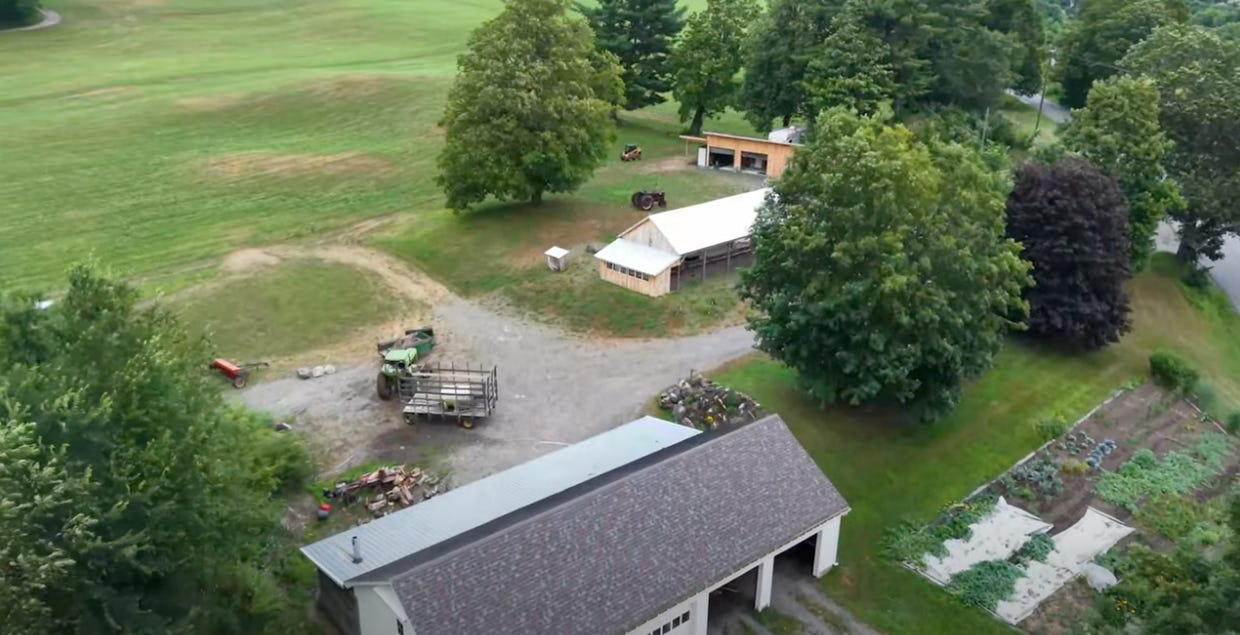
Looking Forward: Scaling Down for Maximum Impact
Elizabeth's future plans focus on intensive improvement rather than extensive expansion:
Consolidating farm stay operations to weekends for better guest experiences
Continuing feed optimization to reduce omega-6 content
Testing meat annually to verify nutritional improvements
Expanding educational outreach through farm tours and hosting
"I'm actually going to hone down even more on those eight people per weekend and make this an amazing experience for those two days that they're here," Elizabeth explains. "That it's life-changing."
The Bigger Picture: Why Otter Creek Farm Matters
Elizabeth's story represents something bigger than one farm's success. It's proof that regenerative agriculture works when applied thoughtfully and adapted to local conditions. More importantly, it demonstrates that we don't need massive operations to create meaningful change in our food system.
"The more that I give to the land, the more the land gives to me," Elizabeth reflects. "The more that I give to the animals, the more they give me. It makes me see what we humans don't do for ourselves or what we've lost."
For food freedom rebels, Otter Creek Farm proves that another way is possible – one that honors soil, respects animals, nourishes communities, and creates profitable businesses without compromising values.
Ready to find your own regenerative farmer and join the food freedom revolution? Start by visiting farms in your area, asking questions, and supporting farmers like Elizabeth who are proving that agriculture can heal both land and communities.
Want more regenerative agriculture success stories and practical insights delivered weekly? Help your friends join thousands of food freedom rebels getting our insider updates – because knowing where your food comes from is the first step toward true food freedom.

